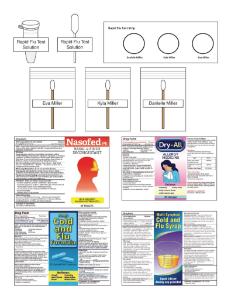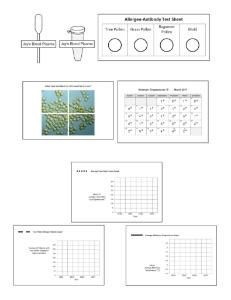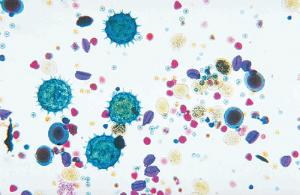Allergy Science; Plus a free student handout from AccessScience
The students in your class will be itching to learn more after the very first lesson about substances that cause allergic responses.
Access to this content is available to Ward’s World readers for free from McGraw Hill’s AccessScience, an award-winning, digital STEM resource that provides immediate, authoritative answers to students’ thirst for scientific knowledge on topics such as climate change, virology, pollution, and more. Ward’s World and McGraw Hill have partnered to offer educators a no-obligation, free trial subscription to this product. Request your free trial today and discover how valuable AccessScience can be for you and your students.
High School
Achoo! Gesundheit! Bless you! Alhamdulillah! However you say it, the millions of people affected by seasonal allergies have heard it all! Allergies happen when our immune system reacts (overreacts) to a foreign substance — such as pollen, bee venom, pet dander, or a food that doesn't cause a reaction in most people.
There are so many areas to focus your lesson plan on when it comes to allergens, so go nuts!
The most common types of allergies your students will be itching to learn about include:
Drug allergies
An abnormal reaction of the immune system to a medication. The most common drugs to cause a reaction are antibiotics like amoxicillin, penicillin, or tetracycline and nonsteroidal anti-inflammatory drugs like ibuprofen and naproxen.
Food allergies
An unpleasant or dangerous immune system reaction after eating certain foods. Milk, eggs, fish, shellfish, tree nuts, peanuts, wheat, and soybeans account for 90% of food allergies.
Contact dermatitis
A skin rash caused by contact with a certain substance. Stay away from that poison ivy creeping around!
Latex allergy
An allergic reaction to certain proteins found in natural rubber latex. Better stock up on these nitrile gloves instead.
Allergic asthma
Asthma that is triggered by exposure to the same substances that trigger allergy symptoms.
Seasonal allergies
An allergic response causing itchy, watery eyes, sneezing, and other similar symptoms. Don’t forget to take allergy medicine before your symptoms start, not after. Here are some tissues; you may need them!
Animal allergies
An abnormal immune reaction to proteins in an animal's skin cells, saliva, or urine. Most people think it’s the animal’s hair/fur causing the problem!
Anaphylaxis
A severe, potentially life-threatening allergic reaction. An allergic reaction is considered anaphylaxis when it involves Airway, Breathing, or Consciousness/Circulation (ABC).
Mold allergies
An abnormal allergic reaction to mold spores. Not every mold causes allergies. The most common allergy-triggering molds include alternaria, aspergillus, cladosporium, and penicillium.
Download McGraw Hill's AccessScience article, Allergy, to develop your lesson plans that help students understand allergens, mechanisms, types, and more! The free download also includes assessment questions and answers you can use to test student understanding.
Recommended Products
[StartProductBlock]

Science Take-Out® Cold, Flu, Or Allergy?
Conduct simulated flu tests. Use product labels to select the medicines appropriate for the flu, the common cold, or allergies.
[EndProductBlock]
[StartProductBlock]

Science Take-Out® Is Climate Change Making Us Sick?
Simulated antibody tests to determine tree pollen allergies. Graph and analyze data to determine the correlation between temperature, pollen counts, and allergic symptoms.
[EndProductBlock]
[StartProductBlock]

Mixed Pollen, 16 Types Slide
Observe the many diverse pollen types. Stained pollen with key card.
[EndProductBlock]
